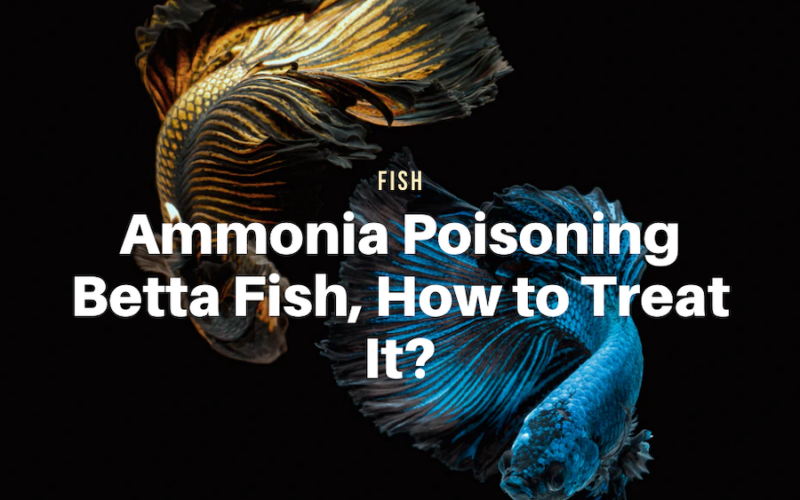Ammonia poisoning is a silent killer in bettas. Ammonia levels inside the tank can increase for some reasons but it is mostly caused by poor water quality, an overpopulated tank, or even a new tank. Luckily, you can prevent ammonia poisoning betta fish from happening.
When your bettas are poisoned, they will show several symptoms like gasping for air and red streaking. Even in extreme cases, the condition may cause a change in their gill color. When you spot these symptoms, you should take action immediately.
Depending on the severity, ammonia poisoning can be treated. There are a number of options to choose from. It can be as simple as performing frequent water changes to adding an ammonia detoxifier. Before taking an action, it’s best to decide on which level of ammonia poisoning in your bettas.
There are a couple of ways to prevent your bettas from ammonia poisoning. Regular ammonia testing plays a vital role in keeping ammonia levels monitored. And if you have enough time, frequent tank cleaning helps control ammonia levels in the tank.
Are you new in betta keeping? We’ve provided you with a brief guide on ammonia poisoning, including identifying symptoms, learning how to treat ammonia poisoning, and getting to know ammonia poisoning prevention. Check them out!
What Is Ammonia?

Ammonia is a type of gas that dissolves in water. Most often, the colorless gas is produced by fish waste. Instead of coming from feces, the majority comes into the tank when your fish exhales. The more fish you have in the tank, the faster the ammonia level increases.
A high level of ammonia can be toxic to betta fish. If left untreated, it may poison your pets and in extreme cases, it may lead to death. Nitrification is needed to address this issue. This is a process of converting ammonia into less harmful nitrate conducted by good bacteria.
That becomes the problem, ammonia is impossible to see with your bare eyes. The only way to check the ammonia level in your tank is to test the water. That’s why regular water testing is essential to monitor the level of ammonia, especially if you have a newly built tank.
What is Ammonia Poisoning in Bettas?
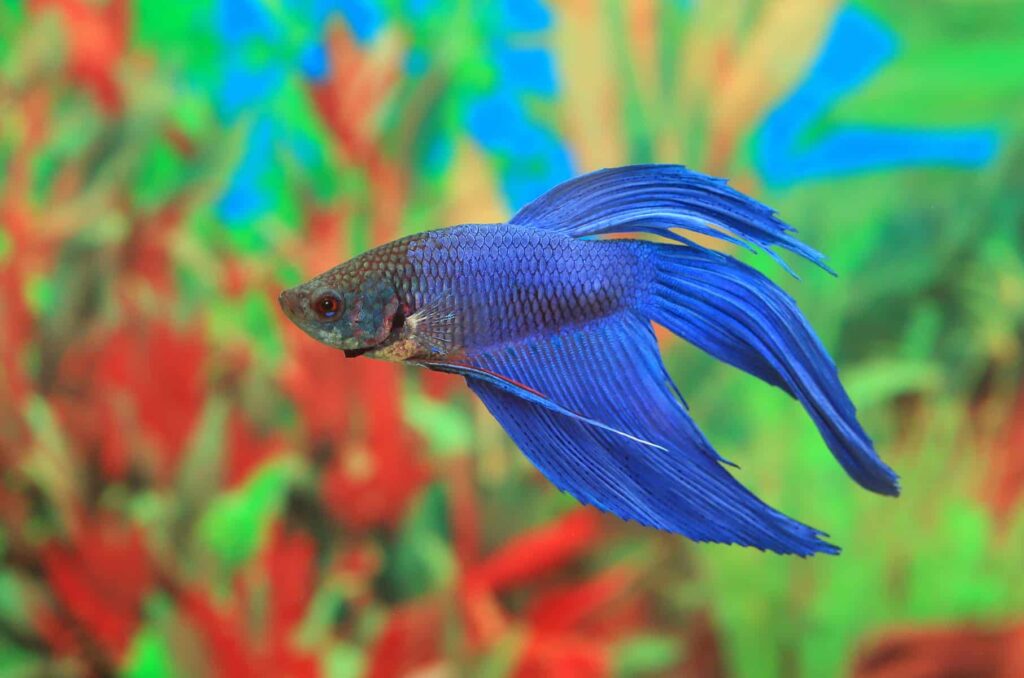
In the wild, significant accumulations of leftover food and waste that triggers ammonia poisoning are rare to find. On the other hand, an aquarium can be totally different. The environment in the tank is closed so that excess food and fish waste are more likely to build up, causing a high concentration of ammonia.
As the level of this gas increases, it starts to burn the gills of bettas and causes breathing difficulties. When left untreated, this condition may lead to death.
Being a major killer of freshwater aquarium fish, ammonia poisoning is frequently found in new setups. New aquariums don’t have a proper cycle yet so ammonia quickly builds up inside the tank. However, this condition also happens in an established, overpopulated tank.
Failure in the filtration system may also trigger ammonia poisoning.
Additionally, the use of certain medications can kill good bacteria colonies that help with the nitrification process, preventing the conversion of ammonia into nitrate.
In an ideal condition, the level of ammonia in an aquarium should be zero. But a small amount of ammonia can be tolerated by fish and it doesn’t cause significant health issues.
You might also want to read our article about why betta fish is spitting out food.
What Causes Ammonia Poisoning?
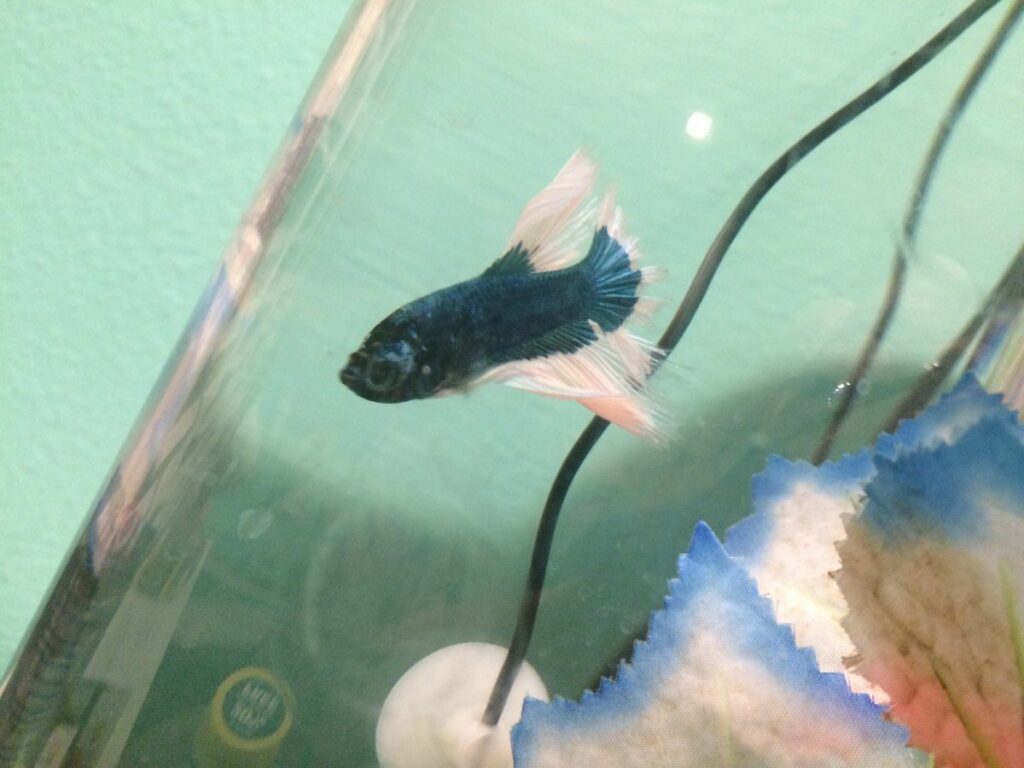
Basically, ammonia poisoning is caused by too much ammonia in the water. This condition can be caused by so many factors. Knowing what causes ammonia buildup can help you prevent it from happening. Here are the most possible reasons for ammonia poisoning.
1. New Tank
In an established aquarium, ammonia is broken down by the beneficial bacteria into less harmful substances. In a new tank, the beneficial bacteria have not yet been established and it may lead to ammonia spikes. Most often, it takes around 6 to 8 weeks until the bacteria colonies are established.
2. Decaying Matter
Even an established tank can get ammonia poisoning issues. In this case, the most possible cause is decaying matter buildup. Rotten food, feces, dead plants, and biological waste are the most potential to raise ammonia levels in the tank.
3. Overpopulation
The more crowded your tank, the more waste it produces. This is quite enough to say that ammonia poisoning can be caused by overpopulation, even in an established tank. Things get worse if you fail to maintain regular cleaning schedules.
4. Infrequent Water Changes
Water changes simply remove ammonia in the water. When dirty water is replaced with clean water, ammonia is diluted and the levels decrease. On the contrary, if you are not changing the water then the levels of ammonia will increase.
5. Death of Good Bacteria
For some reason, the beneficial bacteria in your tank may die. Without the good bacteria that convert harmful ammonia into harmless substances, an ammonia spike in the aquarium is inevitable.
Symptoms of Ammonia Poisoning in Betta Fish

Ammonia is a horrible threat to any fish because it kills them slowly. Poisoned bettas will show signs and symptoms as the gas damages their gills and internal organs. Once you notice these symptoms, you’ll have to take immediate actions to prevent them from a worse condition.
1. Gasping for Air
At the early stage, ammonia burns betta’s gills which cause breathing problem. You will find them gasping for air—they try to find clean oxygen at the top of the tank. Sometimes you may also find them trying to flee from the tank.
2. Color Change in Gills
Changes in gill color are one of the most obvious symptoms you’ll notice when a betta gets poisoned. If you notice even a slight change in this part, take action immediately to prevent further damage.
When poisoning begins, the gills turn red or purple and they look inflamed. If the damage continues, the gills may begin to bleed. This condition can lead to death if not treated properly.
3. Red Streaks
Not only does ammonia poisoning affect betta’s gills, but it also damages betta’s body. You may notice red streaks on their body and fins. When this happens, you should take immediate action before it damages betta’s internal organs.
However, these red streaks may look similar to stress stripes that appear when your fish become overly stressed. To make sure if it’s caused by ammonia, you’d better conduct a water test once you find strange red streaks on betta’s fins and body.
4. Inflamed Eyes and Anus
Another symptom of ammonia poisoning on betta fish is inflamed eyes and anus. These sensitive areas can be affected if the ammonia level keeps increasing in the water. With an inflamed anus and eyes, the chance to recover is getting smaller.
Immediate treatment is needed when you find this symptom because irritated or damaged sensitive areas can slowly kill your pets. Not to mention seeing your lovely bettas in this condition can be heart-breaking.
Read also: Getting to know popeye in betta fish.
5. Loss of Appetite
When something is wrong with your bettas, they often lose their appetite. The same is true with ammonia poisoning. If you find your betta suddenly loses appetite, testing tank water should be part of your investigation.
However, this symptom may also sign other conditions like stress, depression, and a bloated belly. To make sure if loss of appetite is caused by ammonia poisoning, water testing should be conducted. You may also want to check other symptoms as mentioned previously.
6. Lethargy
Lethargy is a condition when your fish has stopped swimming. It passively floats around the bottom of the aquarium and it signs that your betta is not healthy. There are some possible reasons that cause lethargy, including ammonia poisoning.
If you find your betta stays still at the bottom, you should be conducting quick water testing. If the result shows a high concentration of ammonia, take immediate action to treat and recover your pet betta.
How to Treat Ammonia Poisoning in Bettas
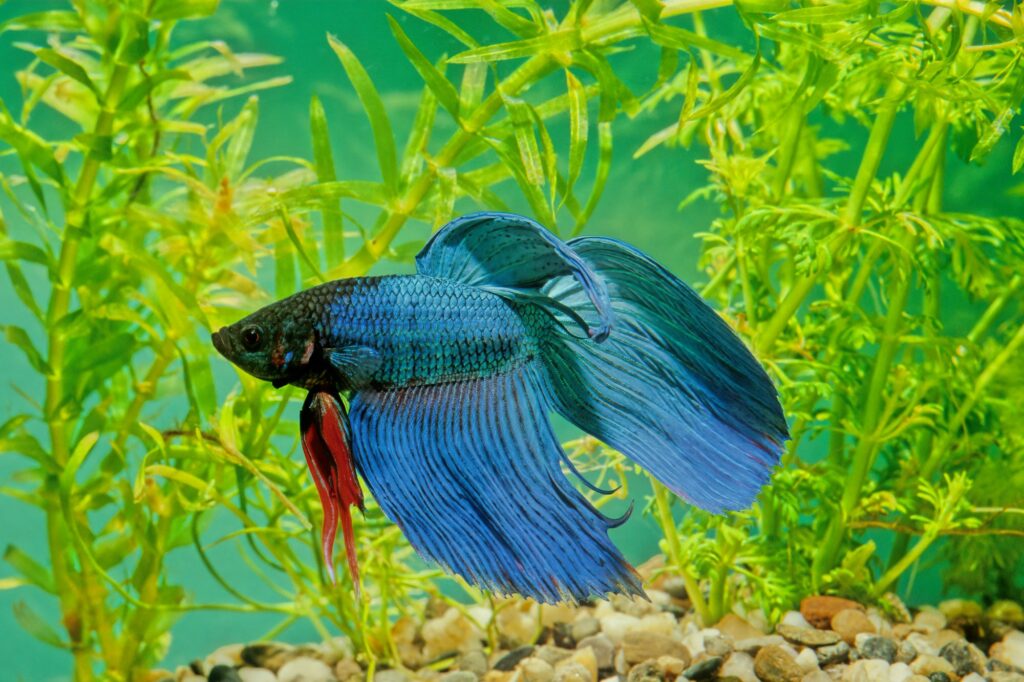
Some factors may trigger an ammonia spike in your freshwater aquarium. If you begin noticing ammonia poisoning symptoms, all you have to do is take a quick action to stop the damage and treat the fish. While water testing helps make sure the reason, the following treatment can save the lives of your betta.
1. Ammonia Detoxifier
Treating your aquarium with an ammonia detoxifier is the simplest and quickest solution to neutralize ammonia concentration in the tank. Whenever the gas levels are above 0 ppm, adding an ammonia detoxifier helps keep your betta fish safe.
There are plenty of ammonia detoxifier products on the market. They don’t get rid of ammonia, instead, they reduce the harmful levels so that bettas can tolerate it. The detoxifier also minimizes the negative effect of ammonia, which will make good bacteria colonies thrive in the tank.
2. Place Ammonia Removal Inserts to Tank Filter
Ammonia removal inserts help filter and remove traces of ammonia in your tank water. Though it works slowly, it can reduce stress suffered by your betta. Best of all, these inserts are abundant on the market and they are pretty inexpensive.
Not only can it treat ammonia poisoning, but it also helps prevent a significant increase in ammonia concentration in your tank. Some inserts are recommended for a heavily populated freshwater tank to control harmful ammonia.
3. Water Change
If you notice ammonia poisoning symptoms, you’ll need to perform at least a 50% water change to reduce the concentration of gas. This solution is especially effective if you can’t make it to local pet stores for removal inserts or detoxifiers.
Water change helps reduce ammonia levels to 0 ppm but there’s a catch. Your bettas may have to deal with temperature shock during the water change. To prevent this from happening, be sure the new water has the same temperature as the replaced water.
4. Avoid Overfeeding
Ammonia poisoning often makes your betta lose its appetite. When your fish is suffering from this condition, it won’t eat much. Limiting the number of food means helps reduce the increase in ammonia levels.
How to Prevent Betta Fish from Poisoning
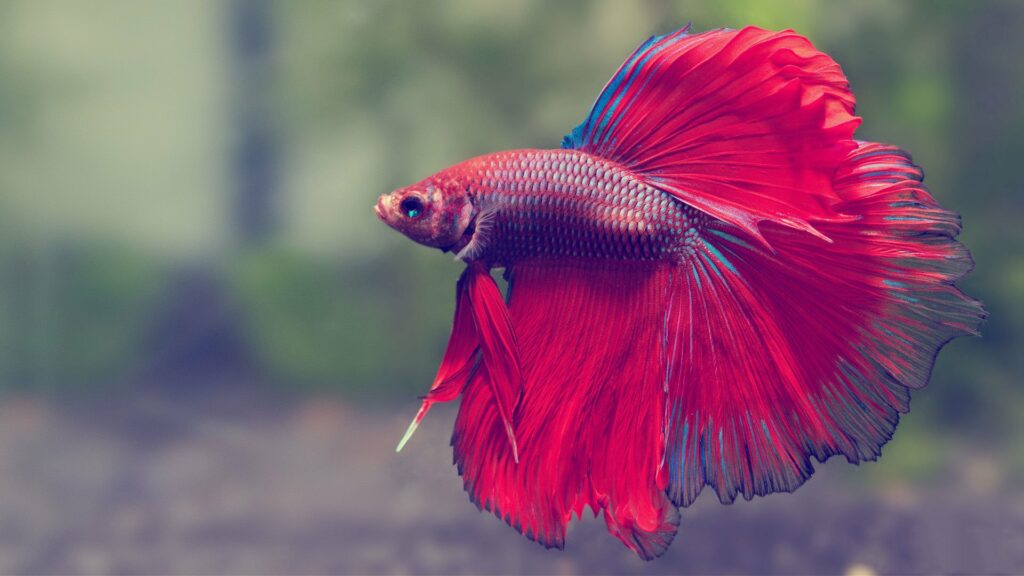
The good news is ammonia poisoning in betta fish can be prevented. There are a number of ways to prevent poisoning from happening and it is much better than giving treatment. Here are possible ways to keep ammonia level inside your aquarium at a safe level.
1. Add Nitrifying Bacteria
Nitrification is a process of converting harmful ammonia into harmless nitrate performed by good bacteria colonies. These bacteria help create a safe closed environment for your pets. Many aquarists consider it a brilliant solution to get rid of ammonia spikes in the tank.
However, it is not recommended to use medications like antibacterial agents after adding nitrifying bacteria as it can kill the colonies. Nitrifying bacteria starters are widely available on the market and you can get them at an affordable price.
2. Change Water Frequently
Ammonia poisoning is commonly caused by poor water quality. Food leftover and fish waste can make aquarium water dirty, especially if your filter doesn’t work well to remove impurities. Frequent water changes keep your water crystal-clear and more importantly, it keeps ammonia at low levels.
As mentioned previously, water changes can’t be performed randomly. You’ll need to pay attention to water temperature so that your bettas are not shocked.
3. Add Water Filters
Adding water filters is a great way to treat and prevent ammonia poisoning in betta fish. These filters keep your aquarium clean and make sure ammonia is at safe levels. For many aquarists, filters are basic everyday requirements that should be met but others think filters are not essential in betta keeping.
4. Choose the Right Tank Size
Preventing ammonia poisoning can start by choosing the right tank size. Ideally, bettas need a five-gallon aquarium. Smaller aquariums get dirty faster than larger ones so you have to perform more frequent water changes to avoid ammonia buildup.
5. Arrange Regular Cleaning Schedule
Regular and frequent tank cleaning is a key to keeping ammonia poisoning at bay. When you clean the aquarium, you can remove decaying matters like fish waste, rotten foods, and even rotten plants. Vacuuming and cleaning the substrate also removes the remaining waste that can trigger ammonia buildup.
Be careful when cleaning your betta tank. Don’t make your fish stressed as it can cause several health issues, such as loss of appetite and red streaks appearance.
6. Add Air Stone
The main function of air stones is to pump oxygen through your aquarium. It flows tiny bubbles that help oxygenate the water, allowing you to remove ammonia buildup inside the tank. Despite the big function, air stones are not an essential addition to the aquarium.
If you want to make sure your bettas get enough oxygen and keep the tank healthy, air stones offer an inexpensive solution to achieve the goals. However, not all bettas like these tools so you’ll need to test if they react positively to the air stone.
7. Perform Regular Water Testing
One of the best ways to prevent ammonia poisoning is by performing regular water testing. Using an ammonia test kit, you can easily figure out the amount of ammonia in the tank. It also offers a brilliant alternative to keeping track of the ammonia level.
With regular testing, you can expect a healthy tank environment. Whenever you find the ammonia levels begin to increase, you can take immediate actions to prevent bettas from getting poisoned.
Ammonia poisoning betta fish is a major killer in a freshwater tank. Commonly caused by dirty water and insufficient tank maintenance, it can be prevented by regular water change. Whenever you notice poisoning symptoms, take immediate actions to save the lives of your fish.
